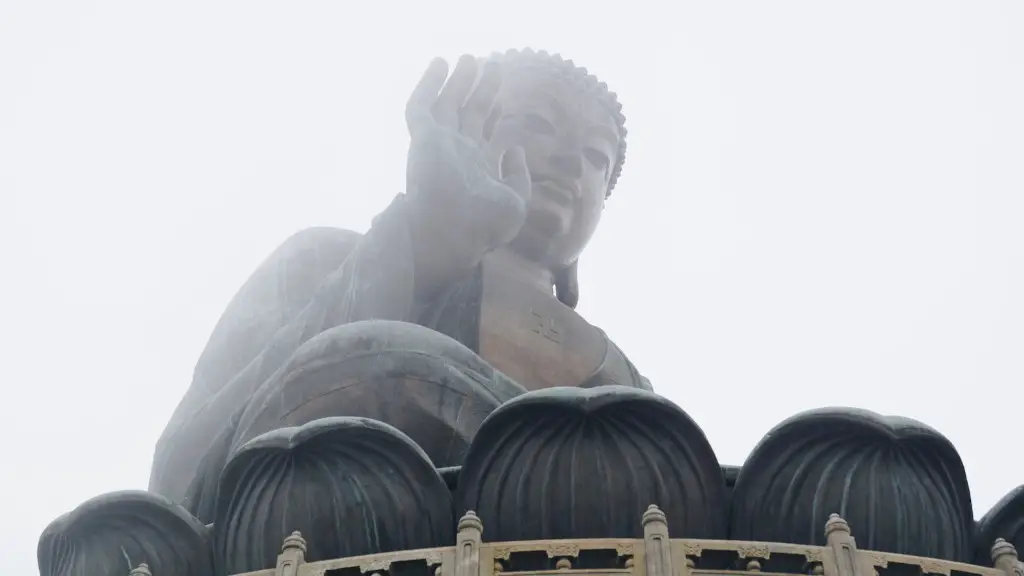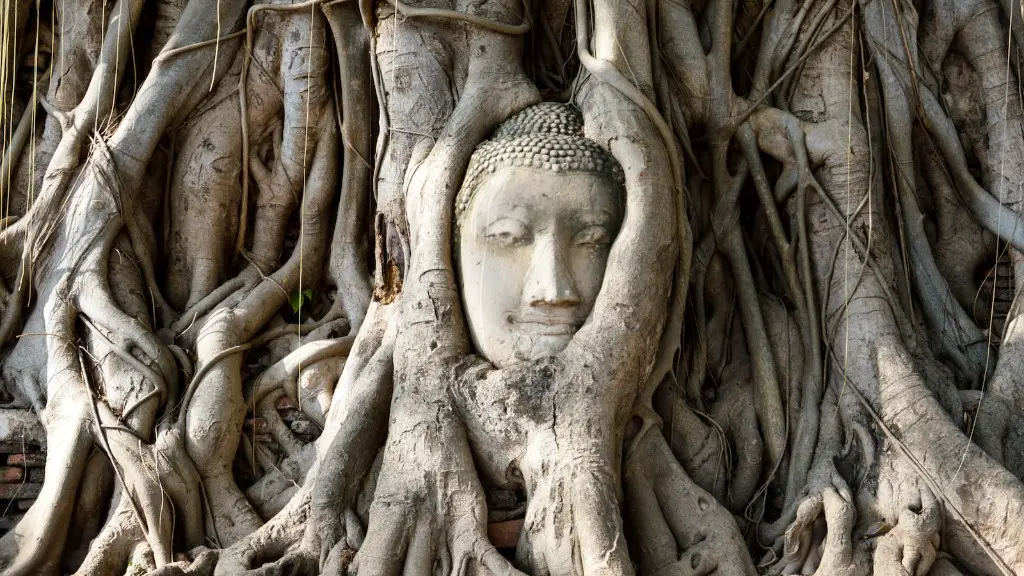Samsara is an essential concept in Hinduism, whose doctrines have been accumulated over a period of several centuries, passing through various sub-groups, eventually yielding an amalgamation of different beliefs. It is a belief that a human being is in an eternal cycle of life, death, and rebirth. From a lofty philosophical perspective, it is the process of obtaining knowledge and one’s ultimate union with the supreme being, Brahman. Samsara is what creates the physical plane and helps us to move through the plane of existence. Samsara’s purpose is to help us reach spiritual enlightenment.
Samsara is the Sanskrit term for “continuous cycle”. It is oftentimes translated to mean “world” or “worldliness” in English. The idea of Samsara is deeply associated with Hinduism, which sees the universe as a cycle that is always moving and never-ending. It is the cycle of death and rebirth that all sentient beings must endure in order to work towards liberation of the soul. All living beings have the potential to experience different forms of suffering through the cycle of Samsara, and transit through various stages of existence.
The cycle of Samsara is governed by the core concept of Karma. As per Hindu belief, Karma is the energy that is acquired by a person in every lifetime. It is the law of cause and effect, wherein a person’s deeds determine the kind of life they will have in the next life. Good deeds will lead to good results, while bad deeds will lead to bad results. People trapped in Samsara are prone to transmigration or rebirth, depending on the Karma they have collected.
Samsara can also be viewed as a form of suffering, as the cycle of life, death and rebirth brings about the suffering of physical pain and mental anguish. The cycle of Buddha’s teachings is to help us realize the Four Noble Truths, as well as the Eightfold Path of liberation from Samsara. This is to help us transcend our human suffering and attain enlightenment, or Moksha.
The primary aim of Hindus is to attain liberation from the cycle of Samsara, and thus, attain Moksha or spiritual enlightenment. To do this, Hindus must go on the path of Dharma, which is a set of rules that can be learned and followed to get closer to Moksha. Through various practices such as meditation and prayer, Hindus will be able to get closer to Moksha, and if they keep going, they can eventually reach liberation from the cycle of Samsara.
Purushartha: The Four Aims Of Human Life
In Hinduism, the term ‘Purushartha’ encompasses four concepts (Artha, Karma, Dharma, and Moksha) that serve as the four chief goals of a human life. ‘Artha’ refers to material goods and wealth, ‘Karma’ refers to work, ‘Dharma’ refers to righteousness, and ‘Moksha’ refers to liberation. A person’s goal in life should be to achieve a balance between these four aims. A person must fulfill their spiritual and material needs, but should always prioritize spiritual liberation, as it is the only way to transcend the cycle of Samsara and seek inner peace.
The four aims of Purushartha are interconnected and are related to the cycle of Samsara. The idea is to work towards attaining liberation from the cycle of Samsara, by fulfilling one’s material needs and then working on living a righteous and spiritual life. By doing so, one will be able to develop and maintain inner peace, and by doing this, one will be able to find liberation and attain Moksha. This is the ultimate goal of Hinduism, to find liberation and peace.
Karma Yoga: The Path Of Karma
Karma Yoga is a form of spiritual practice prescribed by Hinduism, which focuses on performing action without attachment. This concept emphasizes that any kind of work done without any attachment to its results will lead to liberation from Samsara. Karma Yoga is part of the Bhagavad Gita, a seminal text of Hinduism, which explains the concept in detail. Karma Yoga focuses on selfless action and the idea is to take all the bad and good that comes our way and accept it, without any attachment.
Karma Yoga is a type of yoga where one can perform action for the sake of action, and not for the sake of the fruits of the same. It is the practice of living in accordance with certain ethical and spiritual principles to achieve one’s goals and develop a personal sense of inner-fulfillment for the purpose of liberation from Samsara. The idea is to perform all actions such as meditation, selfless service, and ethical living, without attachment to the results.
Karma Yoga is selfless service and involves helping others without expecting anything in return. It is the practice of accepting the results of our actions without judgement and learning to be content with one’s own progress and achievements. The purpose is to lead a life of balance and happiness, based on the principles of Dharma, and to detach ourselves from results, thereby liberating us from the cycle of Samsara.
Enlightenment: Attaining Moksha
In the Hindu tradition, Moksha is the ultimate goal, the liberation of the soul from the cycle of Samsara. Moksha is the result of total spiritual detachment from the physical world and the attainment of a higher sense of awareness. It is the understanding of the true nature of our existence, known as ‘Brahman Satyam’, and allows us to move beyond the cycle of life, death and rebirth.
Moksha is attained through a process of self-realization, which can be achieved through contemplation, meditation, and other yogic practices. It is only when we have completely detached ourselves from the cycle of samsara that we can truly experience the essence of Moksha. According to the Hindu religion, one cannot achieve Moksha if they are connected to material desires or physical aspects of life, so it is important to focus on spiritual practice and meditation in order to move away from Samsara.
The philosophy of Moksha states that our soul is ultimately free and eternal, even after the dissolution of our physical body in the cycle of Samsara. This understanding of the true nature of our existence can be achieved through meditation and spiritual practice, which allows us to transcend our personal limitations, experience the truth, and attain Moksha.
Yoga: The Path To Liberation
Yoga is an important spiritual practice in Hinduism, which leads to spiritual realization and is essential to achieving liberation from the cycle of Samsara. Yoga refers to any type of physical, mental, or spiritual discipline that helps us to achieve inner-awareness and a state of harmony. Yoga is a system of spiritual practices that help to bring together the body, mind, and soul.
Yoga includes meditation and physical exercises that help us to develop spiritual discipline and to focus on the divine within us. It is often described as a form of moving meditation and can help us to access our inner-self and to attain liberation from the cycle of Samsara. Yoga helps us to stay present in the moment and to experience inner peace and joy, as well as helping us to detach from the material realm and focus on our spiritual goals.
Through Yoga, we can understand our own consciousness, allowing us to be aware of our own limitations and potentials. By mastering the physical exercises, we can strengthen our spiritual discipline, allowing us to better follow the Eightfold Path to enlightenment. Yoga is an important part of the Hindu philosophy and its practice helps us to gain liberation from Samsara.
Jnana Yoga: Employing Wisdom
Jnana Yoga is described as “the path of knowledge” or as “the path of wisdom” in Hinduism. It is the practice of self-understanding, or “atmajnana”, which helps us move towards spiritual liberation. Jnana Yoga helps us to detach from the material realm and focus on our spiritual practice. By engaging in self-study, we can better understand our own consciousness, and by understanding ourselves, we can discover our true purpose.
Jnana Yoga involves the practice of viveka and vichara (discrimination and enquiry, respectively) in order to obtain knowledge of the self. Viveka is the practice of sorting out what is true and what is false. Vichara, on the other hand, is the practice of inner enquiry, where we ask ourselves questions and look deep within to find the answers. Jnana Yoga involves the practice of both these forms of self-study in order to better understand the self and to be able to attain liberation and enlightenment.
Both of these yogic practices involve self-reflection and enquiry, which help us to move closer to understanding and experiencing the truth. Jnana Yoga is the practice of understanding our true nature, and by engaging in self-study, we can work towards the goal of freedom from the cycle of Samsara. Through the practice of Jnana Yoga, we can discover our true purpose and take practical steps to move closer to liberation and enlightenment.


